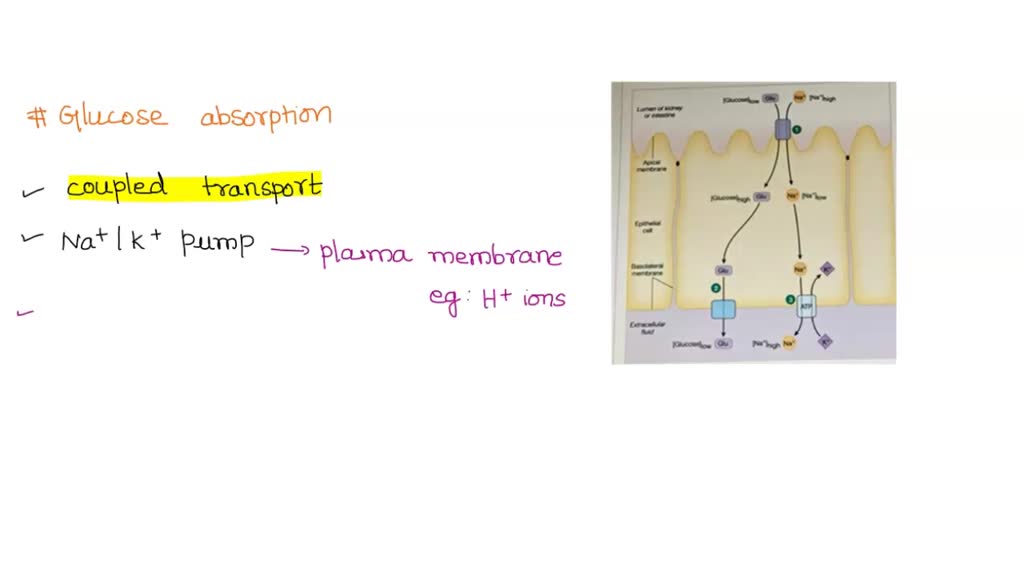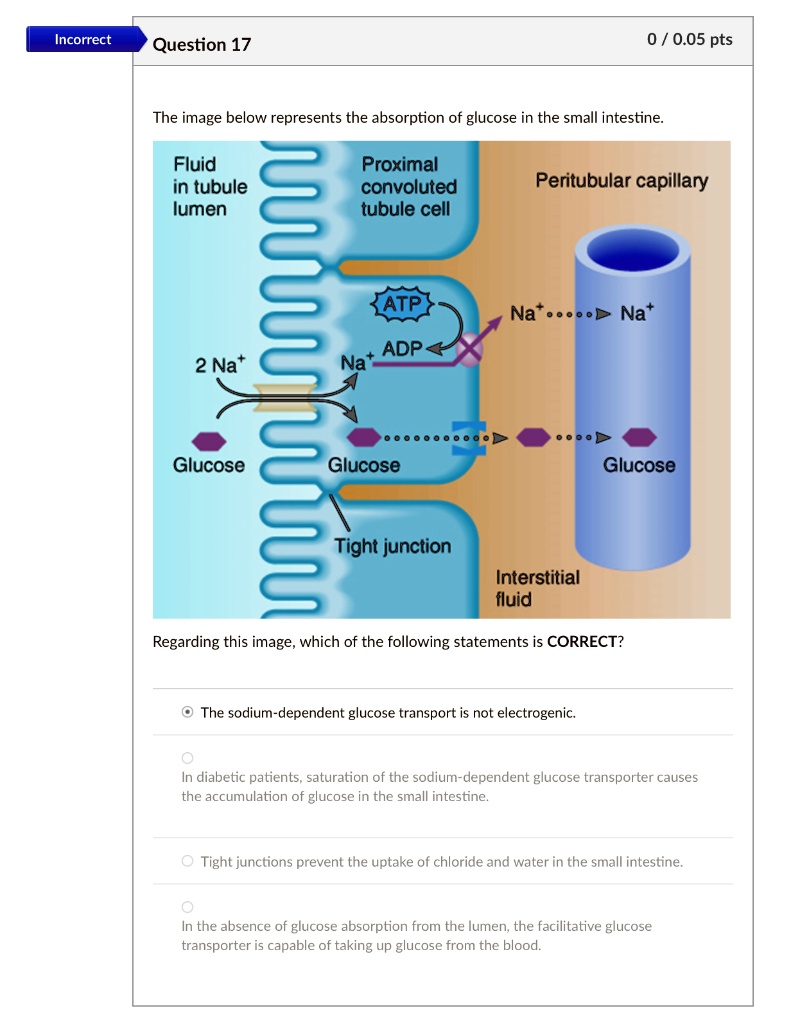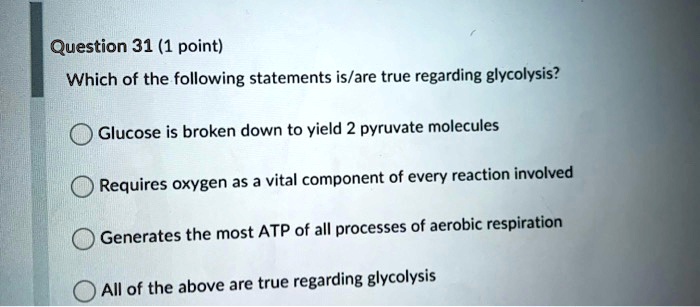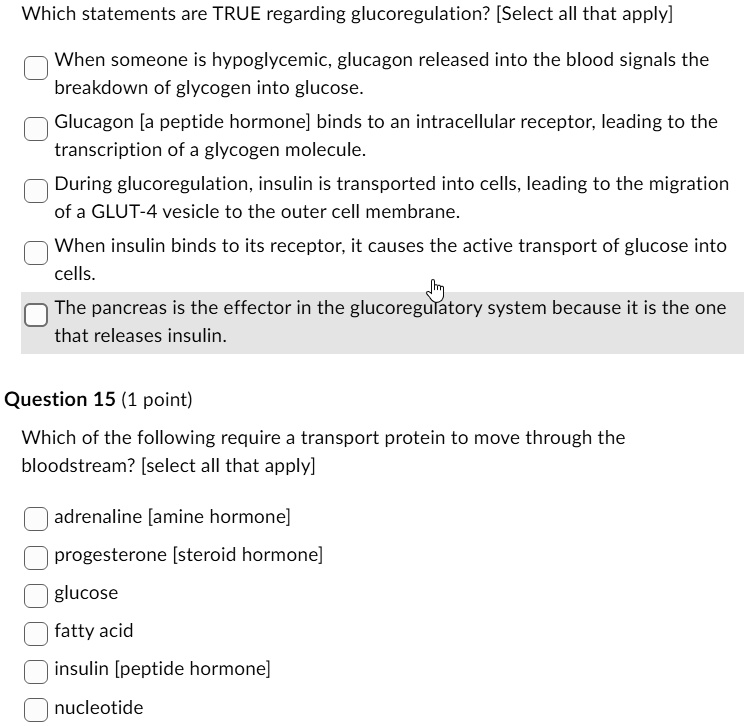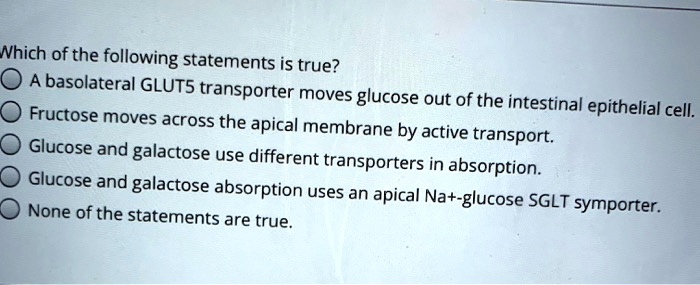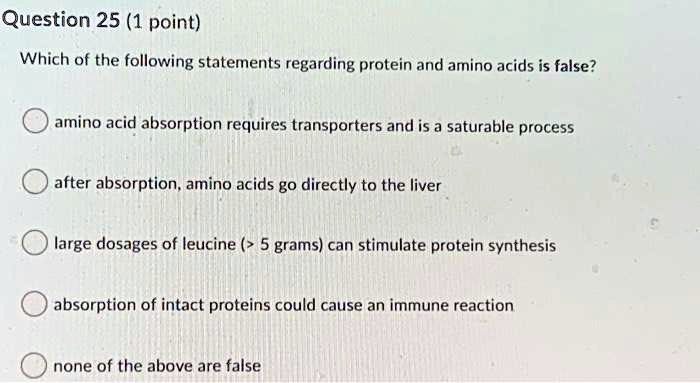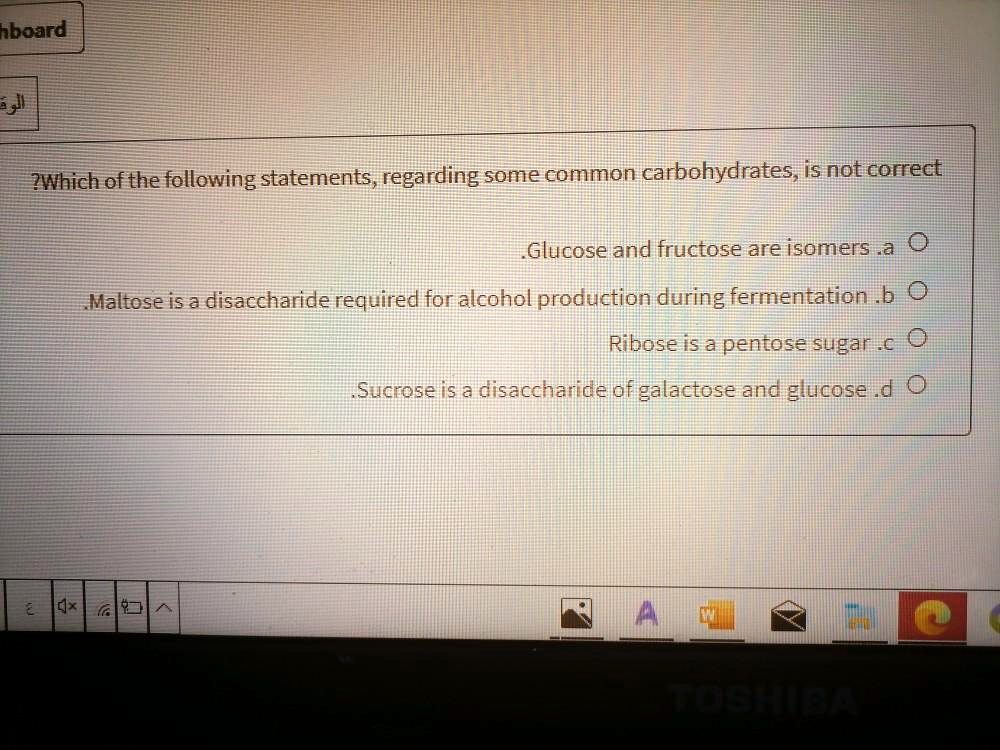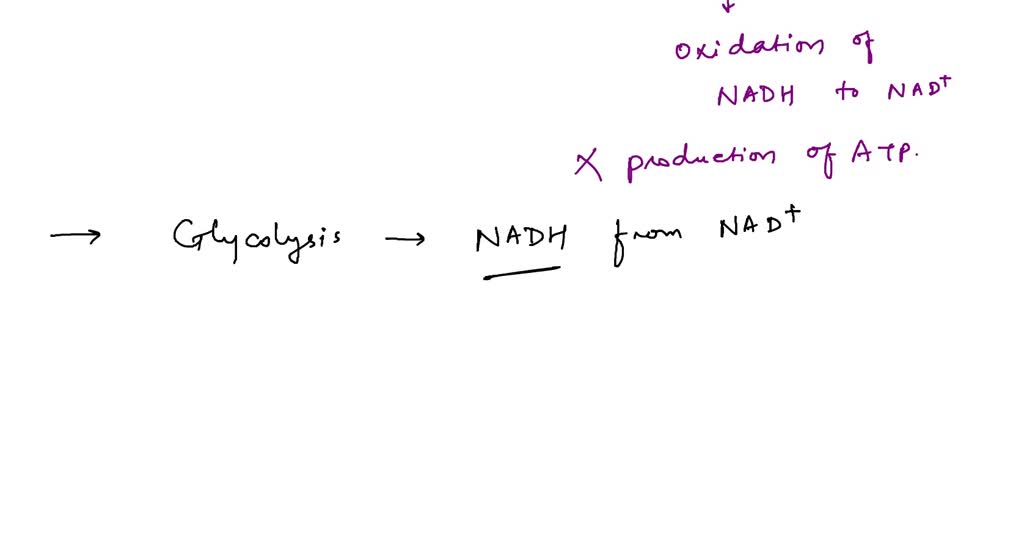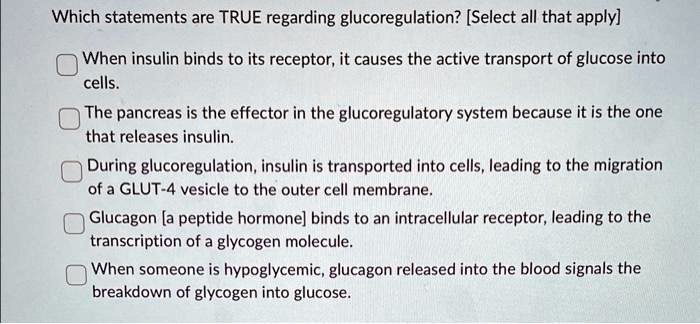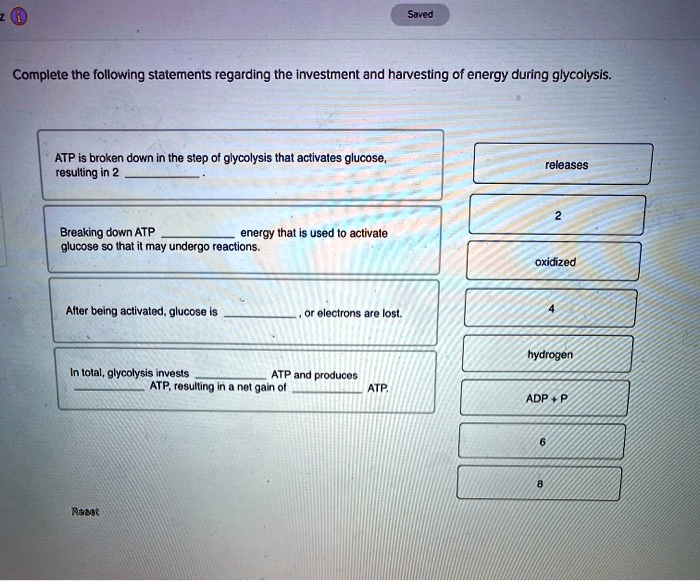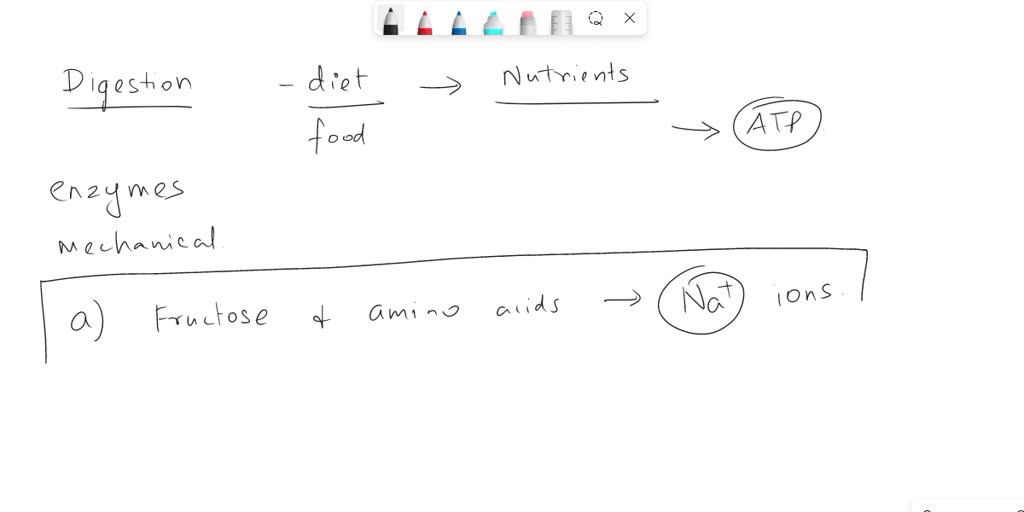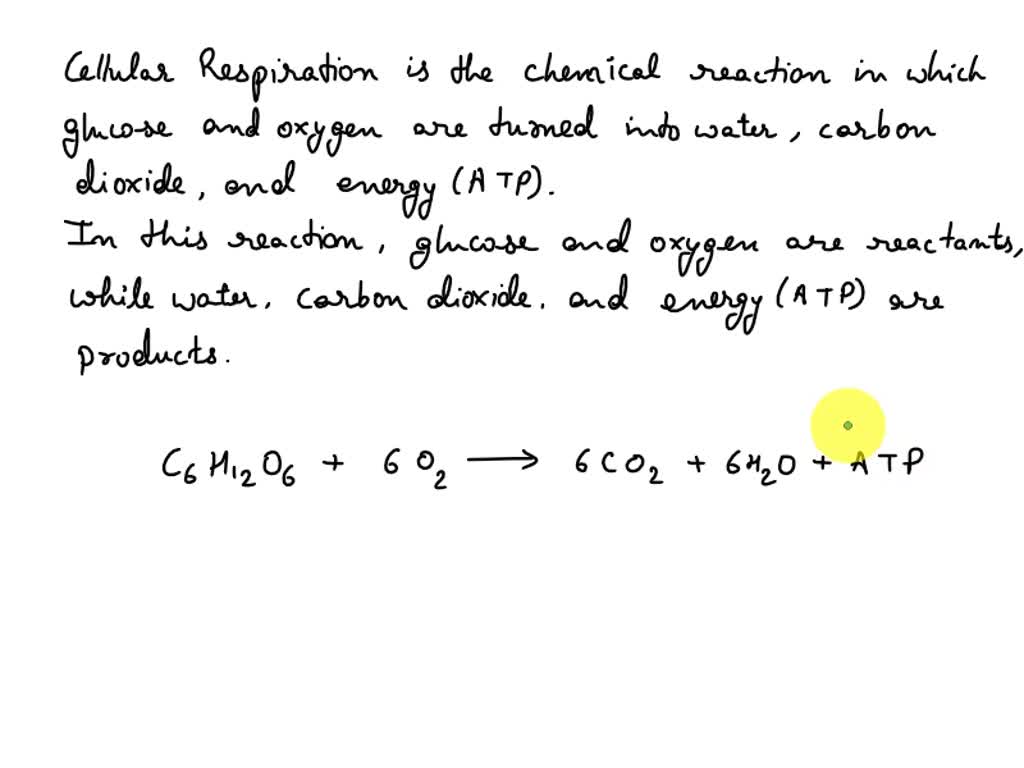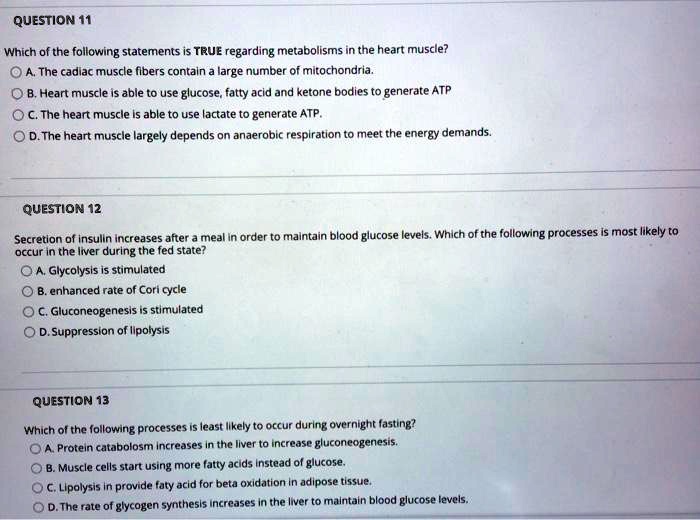Which Of The Following Statements Regarding Glucose Absorption Is True
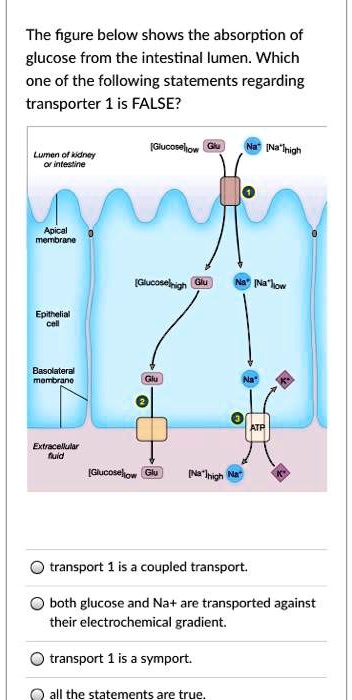
Imagine a slice of warm, golden toast, drizzled with honey. Each bite is a small explosion of sweetness, a comforting energy boost. But what happens after that delicious moment? Where does that sweetness go, and how does our body harness it? The journey of glucose, the simple sugar at the heart of that honeyed toast, is a fascinating and vital process.
Understanding how glucose is absorbed is crucial for maintaining overall health. It directly impacts energy levels, weight management, and the prevention of diseases like diabetes. In essence, knowing the truth about glucose absorption empowers us to make informed choices about our diets and lifestyles.
The Truth About Glucose Absorption: Unveiled
The statement "Glucose absorption primarily occurs in the small intestine" is the most accurate. While the mouth and stomach play minor roles in initial carbohydrate breakdown, the small intestine is where the majority of glucose is actively transported into the bloodstream.
This process is a complex interplay of specialized cells, proteins, and energy. It's a carefully orchestrated system designed to efficiently extract the fuel our bodies need from the food we consume.
A Deeper Dive into the Process
To fully grasp this concept, it's helpful to understand the anatomy of the digestive system. The small intestine, a long, coiled tube, is lined with tiny, finger-like projections called villi.
These villi, in turn, are covered in even smaller microvilli, creating a vast surface area for absorption. Think of it as a meticulously designed sponge, maximizing its ability to soak up nutrients.
Within these villi are specialized cells called enterocytes. They are responsible for actively transporting glucose from the intestinal lumen (the inside of the small intestine) into the bloodstream.
This active transport requires energy. This is because glucose often moves *against* its concentration gradient, from an area of lower concentration in the intestinal lumen to an area of higher concentration inside the enterocytes.
Two key proteins are involved in this active transport: SGLT1 (Sodium-Glucose Cotransporter 1) and GLUT2 (Glucose Transporter 2).
SGLT1 uses the energy from the sodium gradient to pull glucose into the cell along with sodium ions. Imagine it as a pump that uses sodium as the power source to drag glucose along.
Once inside the enterocyte, glucose is then transported across the cell membrane and into the bloodstream via GLUT2. This protein acts like a doorway, allowing glucose to diffuse down its concentration gradient into the blood.
Why the Small Intestine?
The small intestine's unique structure and specialized cells make it the ideal location for glucose absorption. Its large surface area, created by the villi and microvilli, maximizes contact between digested food and the absorptive cells.
Furthermore, the presence of SGLT1 and GLUT2 proteins ensures efficient and controlled transport of glucose into the bloodstream. This system is designed to extract as much glucose as possible from the food we eat.
Other parts of the digestive system play different roles. The mouth begins the process of carbohydrate breakdown with enzymes in saliva. The stomach continues this breakdown, but minimal absorption occurs there.
The large intestine primarily absorbs water and electrolytes, and it plays a crucial role in forming and eliminating waste.
The Importance of Understanding Glucose Absorption
Understanding glucose absorption is paramount for managing blood sugar levels, particularly for individuals with diabetes. Knowing how quickly and efficiently glucose enters the bloodstream helps in making informed dietary choices.
For example, foods with a high glycemic index (GI) are rapidly digested and absorbed, leading to a quick spike in blood sugar levels. Conversely, foods with a low GI are digested and absorbed more slowly, resulting in a more gradual rise in blood sugar.
This knowledge empowers individuals to select foods that help maintain stable blood sugar levels, reducing the risk of complications associated with diabetes.
Moreover, understanding glucose absorption is also relevant for weight management. When glucose levels are consistently high, the body may store excess glucose as fat.
By choosing foods that promote stable blood sugar levels, individuals can better manage their weight and reduce the risk of obesity.
Beyond diabetes and weight management, understanding glucose absorption contributes to overall health and well-being. Stable blood sugar levels promote consistent energy levels, improved mood, and enhanced cognitive function.
Debunking Myths and Misconceptions
There are several common misconceptions surrounding glucose absorption. One is that the stomach is the primary site of glucose absorption. While the stomach plays a role in digestion, minimal absorption occurs there.
Another misconception is that all carbohydrates are absorbed at the same rate. The glycemic index varies depending on the type of carbohydrate, affecting the speed of absorption.
A third misconception is that fiber hinders glucose absorption. Fiber, particularly soluble fiber, can actually slow down glucose absorption, leading to a more gradual rise in blood sugar levels.
Factors Affecting Glucose Absorption
Several factors can influence the rate of glucose absorption. These include the type of carbohydrate consumed, the presence of fiber, and individual factors such as genetics and gut health.
The glycemic index (GI) of a food is a measure of how quickly it raises blood sugar levels. Foods with a high GI are rapidly absorbed, while those with a low GI are absorbed more slowly.
Fiber, especially soluble fiber, can slow down glucose absorption by forming a gel-like substance in the digestive tract.
Individual factors, such as genetics and gut health, can also play a role. Some individuals may have a genetic predisposition to absorb glucose more or less efficiently. The composition of the gut microbiota can also influence glucose metabolism and absorption.
The Future of Glucose Absorption Research
Research into glucose absorption is ongoing. Scientists are exploring new ways to modulate glucose absorption for therapeutic purposes. This includes developing new drugs and dietary interventions to improve blood sugar control in individuals with diabetes.
One promising area of research is the development of SGLT2 inhibitors, which are a class of drugs that block the reabsorption of glucose in the kidneys, leading to increased glucose excretion in the urine. Although SGLT2 inhibitors act on the kidney, its effect on the kidney lowers blood glucose levels which then impacts how efficiently glucose is absorbed.
Researchers are also investigating the role of the gut microbiota in glucose metabolism and absorption. This could lead to new strategies for preventing and treating metabolic disorders by manipulating the gut microbiota.
Conclusion: Empowering Choices Through Knowledge
Understanding that glucose absorption primarily occurs in the small intestine, driven by specialized proteins like SGLT1 and GLUT2, provides a foundation for informed dietary choices. This knowledge empowers us to manage blood sugar levels, maintain a healthy weight, and promote overall well-being.
The journey of glucose, from a slice of honeyed toast to a source of energy for our cells, is a testament to the intricate and efficient processes of the human body. By understanding these processes, we can make choices that support our health and vitality.
Ultimately, the truth about glucose absorption is not just a scientific fact, but a key to unlocking a healthier and more energetic life. It encourages us to appreciate the complexity of our bodies and to nourish them with intention and awareness.
